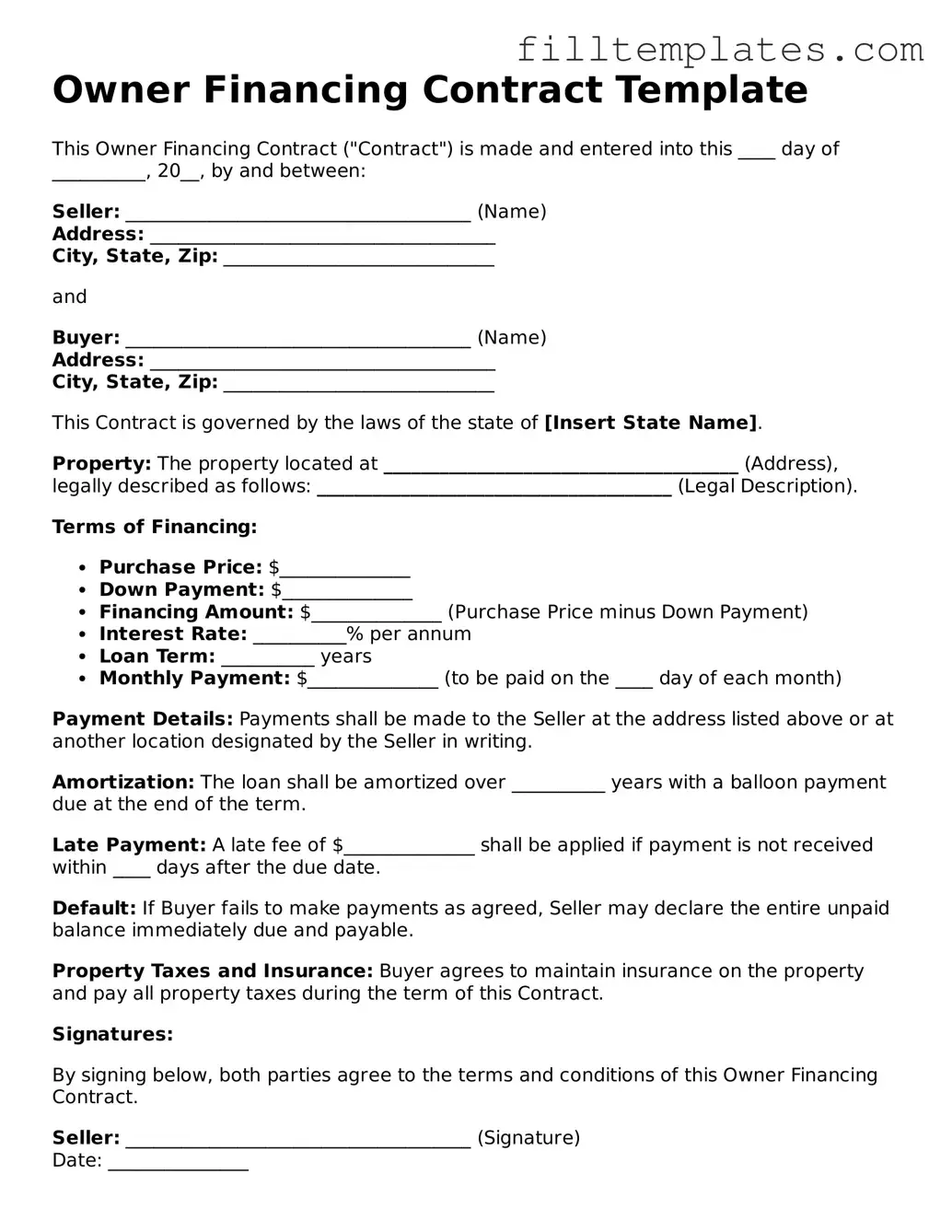Owner Financing Contract Template
This Owner Financing Contract ("Contract") is made and entered into this ____ day of __________, 20__, by and between:
Seller: _____________________________________ (Name)
Address: _____________________________________
City, State, Zip: _____________________________
and
Buyer: _____________________________________ (Name)
Address: _____________________________________
City, State, Zip: _____________________________
This Contract is governed by the laws of the state of [Insert State Name].
Property: The property located at ______________________________________ (Address), legally described as follows: ______________________________________ (Legal Description).
Terms of Financing:
- Purchase Price: $______________
- Down Payment: $______________
- Financing Amount: $______________ (Purchase Price minus Down Payment)
- Interest Rate: __________% per annum
- Loan Term: __________ years
- Monthly Payment: $______________ (to be paid on the ____ day of each month)
Payment Details: Payments shall be made to the Seller at the address listed above or at another location designated by the Seller in writing.
Amortization: The loan shall be amortized over __________ years with a balloon payment due at the end of the term.
Late Payment: A late fee of $______________ shall be applied if payment is not received within ____ days after the due date.
Default: If Buyer fails to make payments as agreed, Seller may declare the entire unpaid balance immediately due and payable.
Property Taxes and Insurance: Buyer agrees to maintain insurance on the property and pay all property taxes during the term of this Contract.
Signatures:
By signing below, both parties agree to the terms and conditions of this Owner Financing Contract.
Seller: _____________________________________ (Signature)
Date: _______________
Buyer: _____________________________________ (Signature)
Date: _______________
This Contract may be executed in counterparts, each of which shall be deemed an original, but all of which together shall constitute one and the same agreement.
